Popular categories
Looking for a yarn?
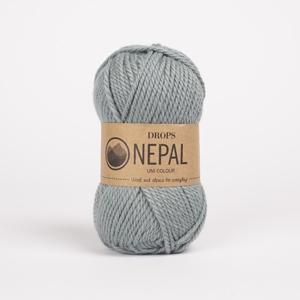
65% Wool, 35% Alpaca
from 2.40 £ /50g
Order DROPS Needles & Hooks
Clicking the ORDER button will redirect you to Wool Warehouse Direct Ltd website
The yarn cost is calculated from the pattern’s smallest size and the yarn’s cheapest product type. Looking for an even better price? You might find it on the DROPS Deals!
Snow Trail
Knitted jumper for men with raglan in DROPS Nepal. Piece is knitted top down with cables and stocking stitch. Size: S - XXXL
DROPS design: Pattern ne-328
Yarn group C or A + A
----------------------------------------------------------
SIZE:
S - M - L - XL - XXL - XXXL
MATERIALS:
DROPS NEPAL from Garnstudio (belongs to yarn group C)
550-650-700-750-850-900 g colour 02, off white
KNITTING TENSION:
16 stitches in width and 20 rows vertically in stocking stitch = 10 x 10 cm.
NEEDLES:
DROPS DOUBLE POINTED NEEDLES SIZE 5.5 mm
DROPS CIRCULAR NEEDLE SIZE 5.5 mm : Length 40 and 80 cm for stocking stitch.
DROPS DOUBLE POINTED NEEDLES SIZE 4.5 mm
DROPS CIRCULAR NEEDLE SIZE 4.5 mm : Length 40 and 80 cm for rib.
DROPS CABLE NEEDLE - for cables.
Needle size is only a suggestion! If you have too many stitches on 10 cm switch to a larger needle size. If you have too few stitches on 10 cm switch to a smaller needle size.
-------------------------------------------------------
Alternative Yarn – See how to change yarns here
Yarn Groups A to F – Use the same pattern and change the yarn here
Yarn usage using an alternative yarn – Use our yarn converter here
-------------------------------------------------------

65% Wool, 35% Alpaca
from 2.40 £ /50g
Order DROPS Needles & Hooks
Clicking the ORDER button will redirect you to Wool Warehouse Direct Ltd website
The yarn cost is calculated from the pattern’s smallest size and the yarn’s cheapest product type. Looking for an even better price? You might find it on the DROPS Deals!
- English (UK/cm)
- Česky - not translated
- Dansk
- Deutsch
- Eesti keel
- English (US/in)
- Español
- Français
- Íslenska
- Italiano
- Magyar
- Nederlands
- Norsk
- Polski
- Português
- Suomi
- Svenska
- English (UK/cm), Bulgaria
- English (UK/cm), Croatia
- English (UK/cm), Greece
- English (UK/cm), Latvia
- English (UK/cm), Lithuania
- English (UK/cm), Romania
- English (UK/cm), Slovenia
- Česky, Slovakia - not translated
Pattern instructions
EXPLANATION FOR THE PATTERN:
----------------------------------------------------------
PATTERN:
See diagrams A.1 to A.3.
INCREASE TIP (applies to raglan):
Work until 1 stitch remains before marker, 1 yarn over (= 1 stitch increased), knit 2, 1 yarn over (= 1 stitch increased). Increase like this at all markers (= 8 stitches increased). Work yarn overs twisted on next round. Work the increased stitches in the pattern. I.e. on back piece work them in stocking stitch, on front piece work increases first in stocking stitch then in pattern A.2a/A.3a and then in stocking stitch.
DECREASE TIP (applies to side on body and sleeves):
Decrease 1 stitch on each side of marker thread as follows: Work until 4 stitches remain before marker thread and knit 2 together, knit 4 (marker thread is in the middle of these stitches), slip 1 stitch knitwise, knit 1, pass slipped stitch over stitch worked.
CAST-OFF TIP:
To avoid a tight cast-off edge you may use a larger needle. If this also is too tight, make 1 yarn over after approx. every 4th stitch, cast off these as regular stitches.
----------------------------------------------------------
START THE PIECE HERE:
----------------------------------------------------------
JUMPER - SHORT OVERVIEW OF THE PIECE:
Work neck edge and yoke in the round on circular needle from mid back, top down. Now divide yoke for body and sleeves. Body is worked in the round on circular needle, top down. Work sleeves in the round on double pointed needles, top down.
NECK EDGE:
Cast on 80-84-88-96-96-104 stitches on circular needle size 4.5 mm with Nepal. Work rib = knit 2/purl 2 for 8 cm. Rounds begin mid back. Switch to circular needle size 5.5 mm. Insert 1 marker at the beginning of round, measure yoke from this marker!
YOKE:
Knit 1 round and increase 5-9-13-5-13-5 stitches evenly = 85-93-101-101-109-109 stitches.
Work next round as follows (insert markers between stitches): Work 13-15-17-17-19-19 stitches (= half back piece), insert 1st marker, 14 stitches in stocking stitch (= sleeve), insert 2nd marker, 6-8-10-10-12-12 stitches in stocking stitch, A.1 (= 18 stitches), 6-8-10-10-12-12 stitches in stocking stitch (= front piece), insert 3rd marker, 14 stitches in stocking stitch (= sleeve), insert 4th marker, insert 14-16-18-18-20-20 stitches in stocking stitch (= last half of back piece).
Move the markers upwards when working, increase for raglan on each side of every marker.
On next round increase 1 stitch in each side of every marker - Read INCREASE TIP! Increase like this every other round 19-20-22-24-26-30 times in total, but after the increases have been made 3-3-2-2-1-1 times, increase in pattern on front piece, READ THE REST OF SECTION BEFORE CONTINUING!
When the increases have been made 3-3-2-2-1-1 times, work next round as follows:
Work and increase as before until 2nd marker, work 1 stitch in stocking stitch, A.2a (= 1 stitch), 7-9-10-10-11-11 stitches in stocking stitch, A.1 over 18 stitches as before, 7-9-10-10-11-11 stitches in stocking stitch, A.3a (= 1 stitch), 1 stitch in stocking stitch (3rd marker is here), work and increase the rest of round as before.
REMEMBER THE KNITTING TENSION!
When A.2a and A.3a have been worked 1 time vertically, increase as explained under INCREASE TIP (i.e. work increases on front piece in stocking stitch) until the increases have been done a total of 19-20-22-24-26-30 times, and work A.2b and A.3b over A.2a and A.3a (adjust to make the cable on the same round as A.1) = 237-253-277-293-317-349 stitches. Piece measures approx. 19-20-22-24-26-29 cm from marker mid back. Work pattern until piece measures 20-21-23-25-27-30 cm from marker. Now divide the piece for sleeves and body as follows:
Work the first 34-35-39-42-47-52 stitches (= half back piece), slip the next 48-54-58-60-62-68 stitches on a stitch holder for sleeve and cast on 10-10-10-12-12-12 stitches under sleeve, work the next 72-74-82-88-98-108 stitches as before (= front piece), slip the next 48-54-58-60-62-68 stitches on a stitch holder for sleeve and cast on 10-10-10-12-12-12 stitches under sleeve, work the last 35-36-40-43-48-53 stitches (= half back piece).
BODY:
= 161-165-181-197-217-237 stitches. Insert 1 marker thread in the middle of the 10-10-10-12-12-12 new stitches under sleeve (= in the side of body). Move the marker threads upwards when working; they are used when decreasing in the sides later. Continue in the round with stocking stitch and pattern as before. When piece measures 5 cm from division, decrease 1 stitch on each side of marker threads - read DECREASE TIP (= 4 stitches decreased). Decrease like this every 9 cm 3 times in total = 149-153-169-185-205-225 stitches. When piece measures 31-32-32-32-32-31 cm from division, knit 1 round while AT THE SAME TIME increasing 11-15-11-15-11-15 stitches evenly = 160-168-180-200-216-240 stitches. Switch to circular needle size 4.5 mm and work rib knit 2/purl 2 in the round. Cast off with knit over knit and purl over purl when rib measures 5 cm - read CAST-OFF TIP. Piece measures approx. 36-37-37-37-37-36 cm from division.
SLEEVES:
Slip the 48-54-58-60-62-68 stitches from stitch holder in one side of piece on double pointed needles size 5.5 mm and knit up 1 stitch in each of the 10-10-10-12-12-12 stitches cast on under sleeve = 58-64-68-72-74-80 stitches. Insert 1 marker thread in the middle of the 10-10-10-12-12-12 new stitches. Move the marker thread upwards when working; it should be used for decrease under sleeve. Work in stocking stitch in the round. When sleeve measures 3-3-4-5-5-5 cm from division, decrease 1 stitch on each side of marker thread - remember DECREASE TIP (= 2 stitches decreased). Decrease like this every 3½-3-2½-2-2-1½ cm 10-12-13-15-15-18 times in total = 38-40-42-42-44-44 stitches. When sleeve measures 43-43-41-40-39-38 cm from division, increase 2-4-2-6-4-4 stitches evenly = 40-44-44-48-48-48 stitches. Switch to double pointed needles size 4.5 mm and work rib knit 2/purl 2 in the round. Cast off with knit over knit and purl over purl when rib measures 5 cm - read CAST-OFF TIP.
Work the other sleeve the same way.
Diagram

|
= knit |

|
= purl |

|
= slip 3 stitches on cable needle behind piece, knit 3, knit 3 from cable needle |

|
= slip 3 stitches on cable needle in front of piece, knit 3, knit 3 from cable needle |

|
= between 2 stitches make 1 yarn over, work yarn over twisted on next round to avoid holes |
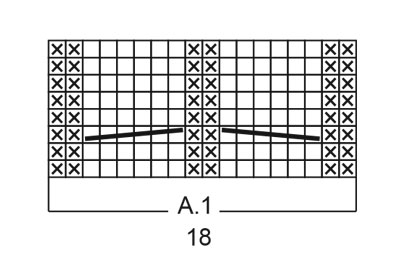


What can you do with our patterns? You can share DROPS patterns online, using the pattern original picture, materials, name and number. But you are NOT ALLOWED to reproduce the complete pattern digitally in any way. Yarn stores are welcome to use the DROPS pattern database to promote the sale of our assortment. You can print out our patterns, make as many copies as you’d like. The only thing we ask is that you don't make any changes / additions to the original printed document. And that the patterns according to the DROPS philosophy are given out to the consumers for free. Editorials that wish to publish our patterns in printed books or magazines can contact us for more information. The sale of garments based on DROPS patterns is permitted as long as they are sold as single items or per order. Further commercial use of the patterns is not permitted. It has to be clearly stated that the garment is made based on a design from DROPS DESIGN. The use of clothing labels of which DROPS DESIGN forms part is conditioned by the inclusion of the following text: “A DROPS DESIGN made by …..”. The use of DROPS photos for marketing purposes/sales is only permitted in connection with the use/sale of DROPS products. The photos may not be cut or edited and the logo should be clearly visible.
We reserve the right to withdraw the permission for use of our patterns at any time, notwithstanding the reason.
Each of our patterns has specific tutorial videos to help you.
These step-by-step tutorials might also help you:
Why is the knitting/crochet tension so important?
Knitting tension is what determines the final measurements of your work, and is usually measured per 10 x 10 cm. It is provided like so: number of stitches in width x number of rows in height - eg: 19 stitches x 26 rows = 10 x 10 cm.
The knitting tension is very individual; some people knit/crochet loosely while others work tightly. You adjust the knitting tension with the needle size, which is why the suggested needle size is only meant as a guide! You need to adjust this (up or down) to ensure that YOUR knitting tension matches the knitting tension provided in the pattern. If you work with a different knitting tension than provided you will have a different yarn consumption, and your work will have different measurements than what the pattern suggests.
The knitting tension also determines which yarns can replace each other. As long as you achieve the same knitting tension you can replace one yarn with another.
See DROPS lesson: How to measure your tension/gauge
See DROPS video: How to make a gauge tension swatch
How do I know how many balls of yarn I need?
The required amount of yarn is provided in grams, eg: 450 g. To calculate how many balls you’ll need you first need to know how many grams are in 1 ball (25g, 50g or 100g). This information is available if you click on the individual yarn quality on our pages. Divide the amount required with the amount of each ball. For example, if each ball is 50g (the most common amount), the calculation will be as follows: 450 / 50 = 9 balls.
Can I use a different yarn than what the pattern suggests?
The important thing when changing from one yarn to another is that the knitting/crochet tension remains the same. This is so that the measurements of the finished piece will be the same as on the sketch provided. It is easier to achieve the same knitting tension using yarns from the same yarn group. It is also possible to work with multiple strands of a thinner yarn to achieve the knitting tension of a thicker one. Please try our yarn converter. We recommend you to always work a test swatch.
Please NOTE: when changing yarn the garment might have a different look and feel to the garment in the photo, due to individual properties and qualities of each yarn.
See DROPS lesson: Can I use a different yarn than the one mentioned in the pattern?
What are the yarn groups?
All our yarns are categorised into yarn groups (from A to F) according to thickness and knitting tension – group A contains the thinnest yarns and group F the thickest. This makes it easier for you to find alternative yarns to our patterns, should you wish to switch yarn. All yarns within the same group have a similar knitting tension and can easily replace each other. However, different yarn qualities have different structures and properties which will give the finished work a unique look and feel.
How do I use the yarn calculator?
At the top of all our patterns you’ll find a link to our yarn calculator, which is a helpful tool should you wish to use a different yarn than suggested. By filling in the yarn quality you wish to replace, the amount (in your size) and number of strands, the calculator will present good alternative yarns with the same knitting tension. Additionally it will tell you how much you’ll require in the new qualities and whether you’ll need to work with multiple strands. Most skeins are 50g (some are 25g or 100g).
If the pattern is worked with multiple colours, every colour will have to be calculated separately. Similarly, if the pattern is worked with several strands of different yarns (for example 1 strand Alpaca and 1 strand Kid-Silk) you will have to find alternatives for each, individually.
Why do you show discontinued yarns in the patterns?
Since different yarns have different qualities and textures we have chosen to keep the original yarn in our patterns. However, you can easily find options among our available qualities by using our yarn calculator, or simply pick a yarn from the same yarn group.
It is possible that some retailers still have discontinued yarns in stock, or that someone has a few skeins at home that they would like to find patterns for.
The yarn calculator will provide both alternative yarn as well as required amount in the new quality.
What size should I knit?
If you think it's hard to decide what size to make, it can be a good idea to measure a garment you own already and like the size of. Then you can pick the size by comparing those measures with the ones available in the pattern's size chart.
You'll find the size chart at the bottom of the pattern.
See DROPS lesson: How to read size chart
Why do I get the wrong knitting tension with the suggested needle size?
The needle size provided in the pattern serves only as a guide, the important thing is to follow the knitting tension. And since knitting tension is very individual, you will have to adjust the needle size to ensure that YOUR tension is the same as in the pattern – maybe you’ll have to adjust 1, or even 2 needle sizes, up or down to achieve the correct tension. For this, we recommend that you work test swatches.
Should you work with a different knitting tension than the one provided, the measurements of the finished garment might deviate from the measurement sketch.
See DROPS lesson: How to measure your tension/gauge
See DROPS video: How to make a tension/gauge swatch
Why is the pattern worked top-down?
Working a garment top-down provides more flexibility and room for personal adjustment. For example it is easier to try the garment on while working, as well as making adjustments to length of yoke and shoulder caps.
The instructions are carefully explaining every step, in the correct order. Diagrams are adjusted to the knitting direction and are worked as usual.
How do I work according to a knitting diagram?
The diagram depicts all rows/rounds, and every stitch seen from the right side. It is read from bottom to top, from right to left. 1 square = 1 stitch.
When working back and forth, every other row is worked from the right side and every other row is worked from the wrong side. When working from the wrong side, the diagram will have to be worked reversed: from left to right, knit stitches are purled, purl stitches are knit etc.
When working in the round every round is worked from the right side and the diagram are worked from right to left on all rounds.
See DROPS lesson: How to read knitting diagrams
How do I work according to a crochet diagram?
The diagram depicts all rows/rounds, and every stitch seen from the right side. It is worked from bottom to top, from right to left.
When working back and forth every other row is worked from the right side: from right to left and every other row is worked from the wrong side: from left to right.
When working in the round, every row in the diagram are worked from the right side, from right to left.
When working a circular diagram you start in the middle and work your way outwards, counter clockwise, row by row.
The rows usually start with a given number of chain stitches (equivalent to the height of the following stitch), this will either be depicted in the diagram or explained in the pattern.
See DROPS lesson: How to read crochet diagrams
How do I work several diagrams simultaneously on the same row/round?
Instructions for working several diagrams after each other on the same row/round, will often be written like so: “work A.1, A.2, A.3 a total of 0-0-2-3-4 times". This means you work A.1 once, then A.2 is worked once, and A.3 is repeated (in width) the number of times provided for your size – in this case like so: S = 0 times, M = 0 times, L=2 times, XL= 3 times and XXL = 4 times.
The diagrams are worked as usual: begin with the first row in A.1, then work the first row in A.2 etc.
See DROPS lesson: How to read knitting diagrams
See DROPS lesson: How to read crochet diagrams
Why are the sleeves shorter in larger sizes?
The total width of the garment (from wrist-to-wrist) will be larger in the larger sizes, despite the actual sleeves being shorter. The larger sizes have longer sleeve caps and wider shoulders, so there will be a good fit in all sizes.
Where on the garment is the length measured?
The measurement sketch/schematic drawing provides information regarding the full length of the garment. If it’s a jumper or a jacket the length is measured from the highest point on the shoulder closest to the neckline, and straight down to the bottom of the garment. It is NOT measured from the tip of shoulder. Similarly, the length of yoke is measured from the highest point on the shoulder and down to where yoke is split into body and sleeves.
On a jacket measures are never taken along bands, unless specifically stated. Always measure inside band stitches when measuring the length.
See DROPS lesson: How to read a schematic drawing
What is a repeat?
Diagrams are often repeated on the round or in height. 1 repeat is the diagram the way it appears in the pattern. If it says to work 5 repeats of A.1 in the round, then you work A.1 a total of 5 times after/next to each other in the round. If it says to work 2 repeats of A.1 vertically/in height you work the entire diagram once, then begin again at the start and work the entire diagram one more time.
Why does the piece start with more chain stitches than it’s worked with?
Chain stitches are slightly narrower than other stitches and to avoid working the cast-on edge too tight, we simply chain more stitches to begin with. The stitch count will be adjusted on the following row to fit the pattern and measurement sketch.
Why increase before the rib edge when the piece is worked top-down?
The rib edge is more elastic and will contract slightly compared to, for example, stocking stitch. By increasing before the rib edge, you avoid a visible difference in width between the rib edge and the rest of the body.
Why increase in the cast-off edge?
It’s very easy to cast off too tightly, and by making yarn overs while casting off (and simultaneously casting these off) you avoid a too tight cast off edge.
See DROPS video: How to bind off with yarn overs (yo)
How do I increase/decrease on every 3rd and 4th row/round alternately?
To achieve an even increase (or decrease) you can increase on, for example: every 3rd and 4th row alternately, like so: work 2 rows and increase on the 3rd row, work 3 rows and increase on the 4th. Repeat this until the increase is complete.
See DROPS lesson: Increase or decrease 1 st on every 3rd and 4th row alternately
How can I work a jacket in the round instead of back and forth?
Should you prefer to work in the round instead of back and forth, you may of course adjust the pattern. You’ll need to add steeks mid-front (usually 5 stitches), and follow the instructions. When you would normally turn and work from the wrong side, simply work across the steek and continue in the round. At the end you’ll cut the piece open, pick up stitches to work bands, and cover the cut edges.
See DROPS video: How to knit steeks and cut open
Can I work a jumper back and forth instead of in the round?
Should you prefer to work back and forth instead of in the round, you may of course adjust the pattern so you work the pieces separately and then assemble them at the end. Divide the stitches for the body in 2, add 1 edge stitch in each side (for sewing) and work the front and back pieces separately.
See DROPS lesson: Can I adapt a pattern for circular needles into straight needles?
Why is the pattern slightly different than what I see in the photo?
Pattern repeats can vary slightly in the different sizes, in order to get the correct proportions. If you’re not working the exact same size as the garment in the photo, yours might deviate slightly. This has been carefully developed and adjusted so that the complete impression of the garment is the same in all sizes.
Make sure to follow instructions and diagrams for your size!
How do I make a women’s size garment into a men’s size one?
If you have found a pattern you like which is available in women’s size it’s not very difficult to convert it to men’s size. The biggest difference will be the length of sleeves and body. Start working on the women size that you think would fit across the chest. The additional length will be worked right before you cast off for the armhole/sleeve cap. If the pattern is worked top-down you can add the length right after the armhole or before the first decrease on sleeve.
Regarding additional yarn amount, this will depend on how much length you add, but it is better with a skein too many than too few.
How do I prevent a hairy garment from shedding?
All yarns will have excess fibres (from production) that might come off as lint or shedding. Brushed yarns (ie hairier yarns) have more of these loose, excess fibres, causing more shedding.
Shedding also depends on what is worn under or over the garment, and whether this pulls at the yarn fibres. It’s therefore not possible to guarantee that there will be no shedding
Below are some tips on how to get the best result when working with hairier yarns:
1. When the garment is finished (before you wash it) shake it vigorously so the looser hairs come off. NOTE: do NOT use a lint roller, brush or any method that pulls at the yarn.
2. Place the garment in a plastic bag and put it in your freezer - the temperature will cause the fibres to become less attached to each other, and excess fibres will come off easier.
3. Leave in the freezer for a few hours before taking it out and shaking it again.
4. Wash the garment according to the instructions on the yarn label.
Why does my garment pill?
Pilling is a natural process that happens to even the most exclusive of fibers. It's a natural sign of wear and tear that is hard to avoid, and that is most visible in high friction areas of your garment like a sweater's arms and cuffs.
You can make your garment look as new by removing the pilling, using a fabric comb or a pill/lint remover.
In the meantime, you can read the questions and answers that others have left to this pattern or join the DROPS Workshop on Facebook to get help from fellow knitters/crocheters!
You might also like...
Snow Trail |
||||||||||||||||
 |
 |
|||||||||||||||
Knitted jumper for men with raglan in DROPS Nepal. Piece is knitted top down with cables and stocking stitch. Size: S - XXXL
DROPS 219-8 |
||||||||||||||||
|
---------------------------------------------------------- EXPLANATION FOR THE PATTERN: ---------------------------------------------------------- PATTERN: See diagrams A.1 to A.3. INCREASE TIP (applies to raglan): Work until 1 stitch remains before marker, 1 yarn over (= 1 stitch increased), knit 2, 1 yarn over (= 1 stitch increased). Increase like this at all markers (= 8 stitches increased). Work yarn overs twisted on next round. Work the increased stitches in the pattern. I.e. on back piece work them in stocking stitch, on front piece work increases first in stocking stitch then in pattern A.2a/A.3a and then in stocking stitch. DECREASE TIP (applies to side on body and sleeves): Decrease 1 stitch on each side of marker thread as follows: Work until 4 stitches remain before marker thread and knit 2 together, knit 4 (marker thread is in the middle of these stitches), slip 1 stitch knitwise, knit 1, pass slipped stitch over stitch worked. CAST-OFF TIP: To avoid a tight cast-off edge you may use a larger needle. If this also is too tight, make 1 yarn over after approx. every 4th stitch, cast off these as regular stitches. ---------------------------------------------------------- START THE PIECE HERE: ---------------------------------------------------------- JUMPER - SHORT OVERVIEW OF THE PIECE: Work neck edge and yoke in the round on circular needle from mid back, top down. Now divide yoke for body and sleeves. Body is worked in the round on circular needle, top down. Work sleeves in the round on double pointed needles, top down. NECK EDGE: Cast on 80-84-88-96-96-104 stitches on circular needle size 4.5 mm with Nepal. Work rib = knit 2/purl 2 for 8 cm. Rounds begin mid back. Switch to circular needle size 5.5 mm. Insert 1 marker at the beginning of round, measure yoke from this marker! YOKE: Knit 1 round and increase 5-9-13-5-13-5 stitches evenly = 85-93-101-101-109-109 stitches. Work next round as follows (insert markers between stitches): Work 13-15-17-17-19-19 stitches (= half back piece), insert 1st marker, 14 stitches in stocking stitch (= sleeve), insert 2nd marker, 6-8-10-10-12-12 stitches in stocking stitch, A.1 (= 18 stitches), 6-8-10-10-12-12 stitches in stocking stitch (= front piece), insert 3rd marker, 14 stitches in stocking stitch (= sleeve), insert 4th marker, insert 14-16-18-18-20-20 stitches in stocking stitch (= last half of back piece). Move the markers upwards when working, increase for raglan on each side of every marker. On next round increase 1 stitch in each side of every marker - Read INCREASE TIP! Increase like this every other round 19-20-22-24-26-30 times in total, but after the increases have been made 3-3-2-2-1-1 times, increase in pattern on front piece, READ THE REST OF SECTION BEFORE CONTINUING! When the increases have been made 3-3-2-2-1-1 times, work next round as follows: Work and increase as before until 2nd marker, work 1 stitch in stocking stitch, A.2a (= 1 stitch), 7-9-10-10-11-11 stitches in stocking stitch, A.1 over 18 stitches as before, 7-9-10-10-11-11 stitches in stocking stitch, A.3a (= 1 stitch), 1 stitch in stocking stitch (3rd marker is here), work and increase the rest of round as before. REMEMBER THE KNITTING TENSION! When A.2a and A.3a have been worked 1 time vertically, increase as explained under INCREASE TIP (i.e. work increases on front piece in stocking stitch) until the increases have been done a total of 19-20-22-24-26-30 times, and work A.2b and A.3b over A.2a and A.3a (adjust to make the cable on the same round as A.1) = 237-253-277-293-317-349 stitches. Piece measures approx. 19-20-22-24-26-29 cm from marker mid back. Work pattern until piece measures 20-21-23-25-27-30 cm from marker. Now divide the piece for sleeves and body as follows: Work the first 34-35-39-42-47-52 stitches (= half back piece), slip the next 48-54-58-60-62-68 stitches on a stitch holder for sleeve and cast on 10-10-10-12-12-12 stitches under sleeve, work the next 72-74-82-88-98-108 stitches as before (= front piece), slip the next 48-54-58-60-62-68 stitches on a stitch holder for sleeve and cast on 10-10-10-12-12-12 stitches under sleeve, work the last 35-36-40-43-48-53 stitches (= half back piece). BODY: = 161-165-181-197-217-237 stitches. Insert 1 marker thread in the middle of the 10-10-10-12-12-12 new stitches under sleeve (= in the side of body). Move the marker threads upwards when working; they are used when decreasing in the sides later. Continue in the round with stocking stitch and pattern as before. When piece measures 5 cm from division, decrease 1 stitch on each side of marker threads - read DECREASE TIP (= 4 stitches decreased). Decrease like this every 9 cm 3 times in total = 149-153-169-185-205-225 stitches. When piece measures 31-32-32-32-32-31 cm from division, knit 1 round while AT THE SAME TIME increasing 11-15-11-15-11-15 stitches evenly = 160-168-180-200-216-240 stitches. Switch to circular needle size 4.5 mm and work rib knit 2/purl 2 in the round. Cast off with knit over knit and purl over purl when rib measures 5 cm - read CAST-OFF TIP. Piece measures approx. 36-37-37-37-37-36 cm from division. SLEEVES: Slip the 48-54-58-60-62-68 stitches from stitch holder in one side of piece on double pointed needles size 5.5 mm and knit up 1 stitch in each of the 10-10-10-12-12-12 stitches cast on under sleeve = 58-64-68-72-74-80 stitches. Insert 1 marker thread in the middle of the 10-10-10-12-12-12 new stitches. Move the marker thread upwards when working; it should be used for decrease under sleeve. Work in stocking stitch in the round. When sleeve measures 3-3-4-5-5-5 cm from division, decrease 1 stitch on each side of marker thread - remember DECREASE TIP (= 2 stitches decreased). Decrease like this every 3½-3-2½-2-2-1½ cm 10-12-13-15-15-18 times in total = 38-40-42-42-44-44 stitches. When sleeve measures 43-43-41-40-39-38 cm from division, increase 2-4-2-6-4-4 stitches evenly = 40-44-44-48-48-48 stitches. Switch to double pointed needles size 4.5 mm and work rib knit 2/purl 2 in the round. Cast off with knit over knit and purl over purl when rib measures 5 cm - read CAST-OFF TIP. Work the other sleeve the same way. |
||||||||||||||||
Diagram explanations |
||||||||||||||||
|
||||||||||||||||

|
||||||||||||||||

|
||||||||||||||||

|
||||||||||||||||
|
Have you made this or any other of our designs? Tag your pictures in social media with #dropsdesign so we can see them! Do you need help with this pattern?You'll find tutorial videos, a Comments/Questions area and more by visiting the pattern on garnstudio.com. © 1982-2024 DROPS Design A/S. We reserve all rights. This document, including all its sub-sections, has copyrights. Read more about what you can do with our patterns at the bottom of each pattern on our site. |
||||||||||||||||
With over 40 years in knitting and crochet design, DROPS Design offers one of the most extensive collections of free patterns on the internet - translated to 17 languages. As of today we count 304 catalogues and 11422 patterns - 11422 of which are translated into English (UK/cm).
We work hard to bring you the best knitting and crochet have to offer, inspiration and advice as well as great quality yarns at incredible prices! Would you like to use our patterns for other than personal use? You can read what you are allowed to do in the Copyright text at the bottom of all our patterns. Happy crafting!








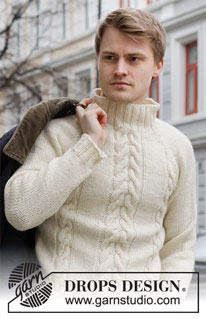

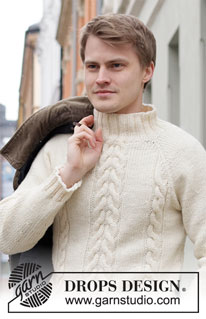

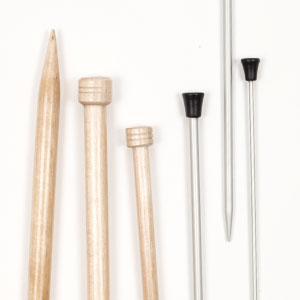
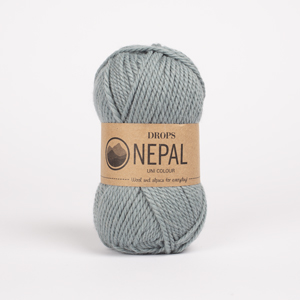
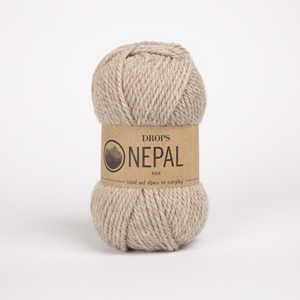

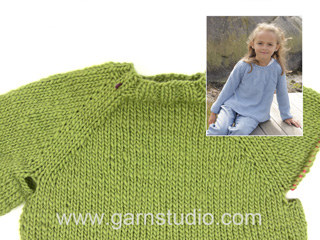
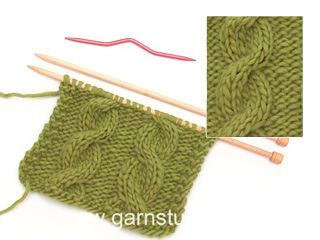
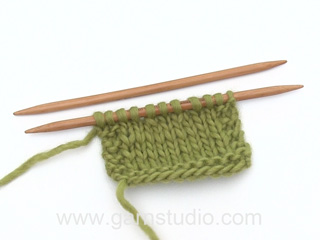
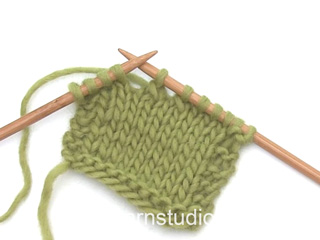
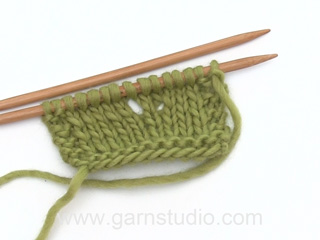

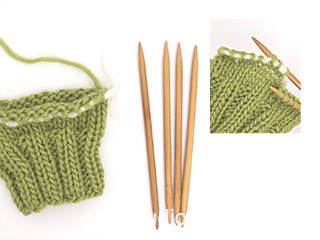

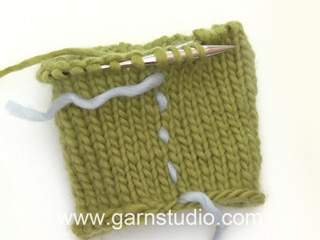
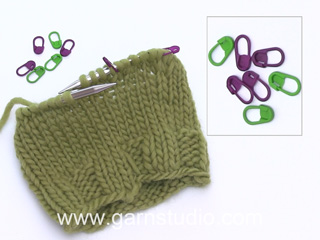
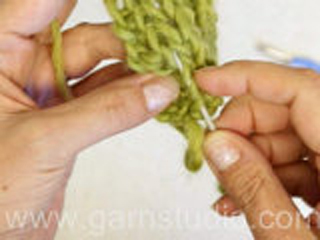
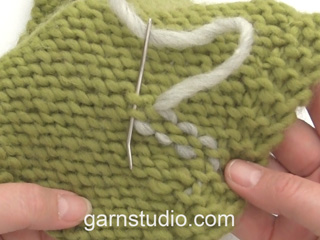
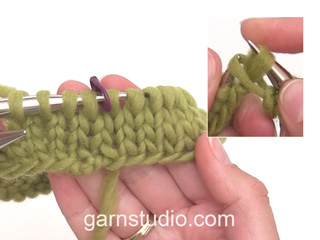
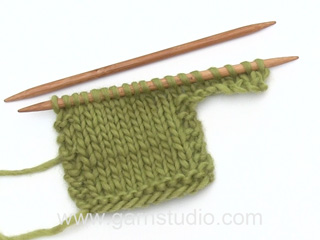

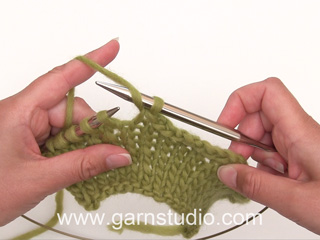

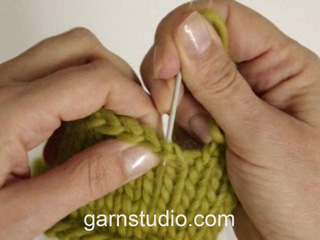
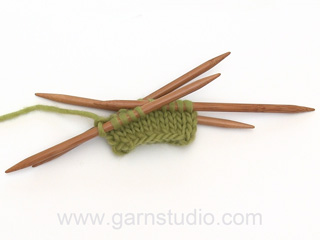
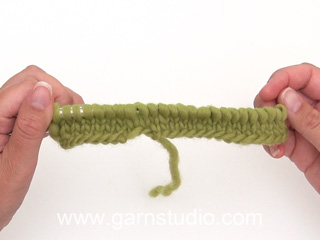
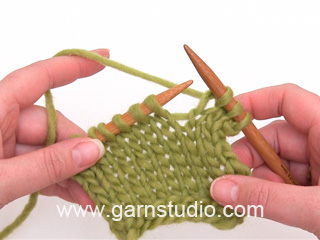
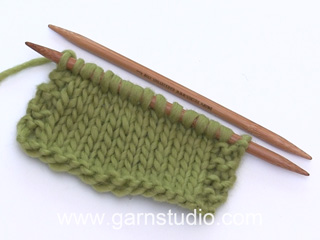
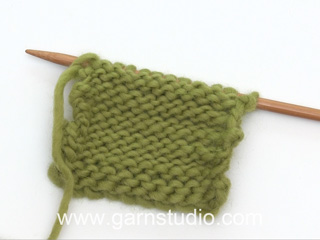
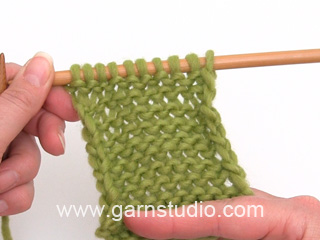
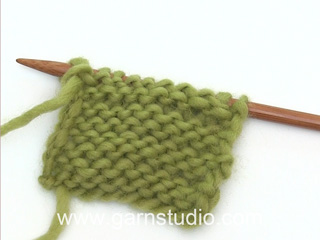

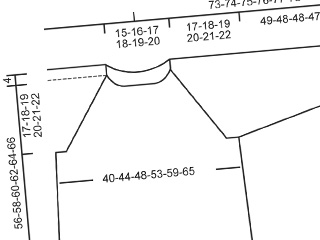
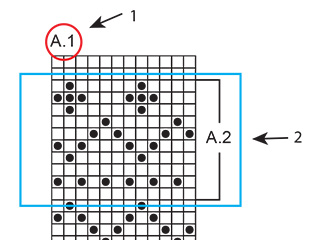
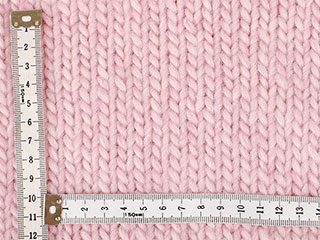
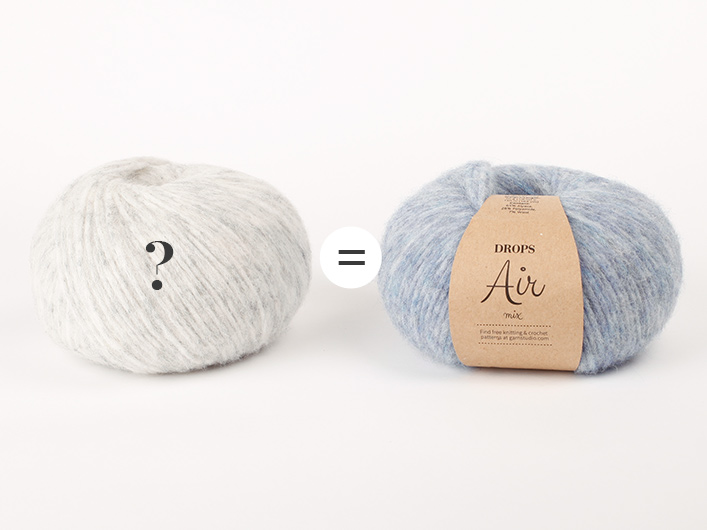

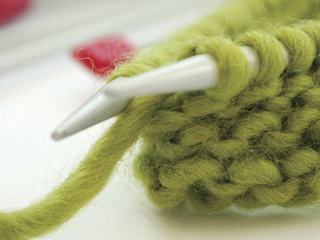
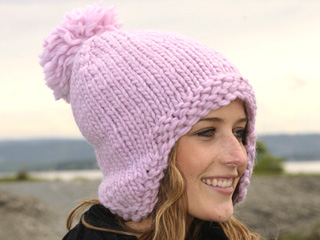
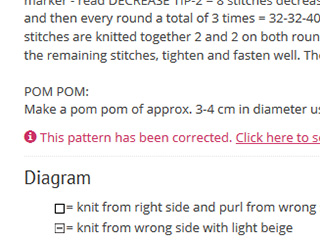
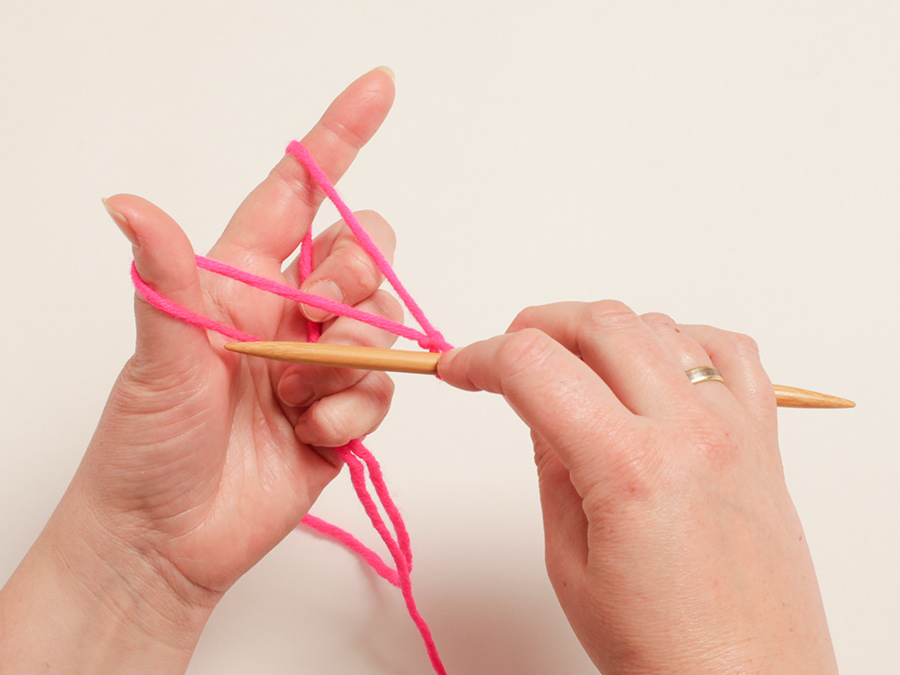
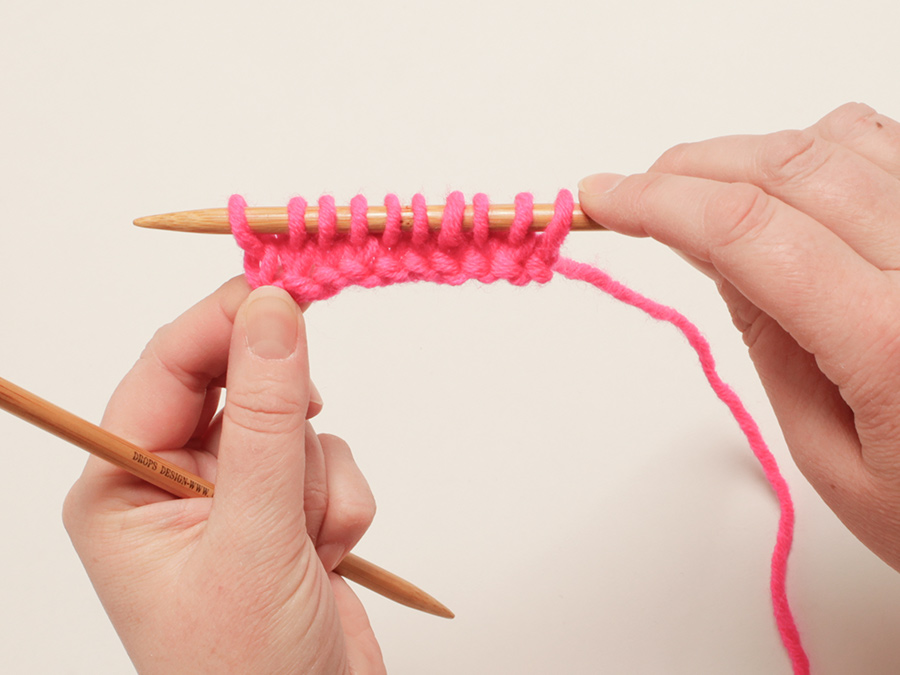

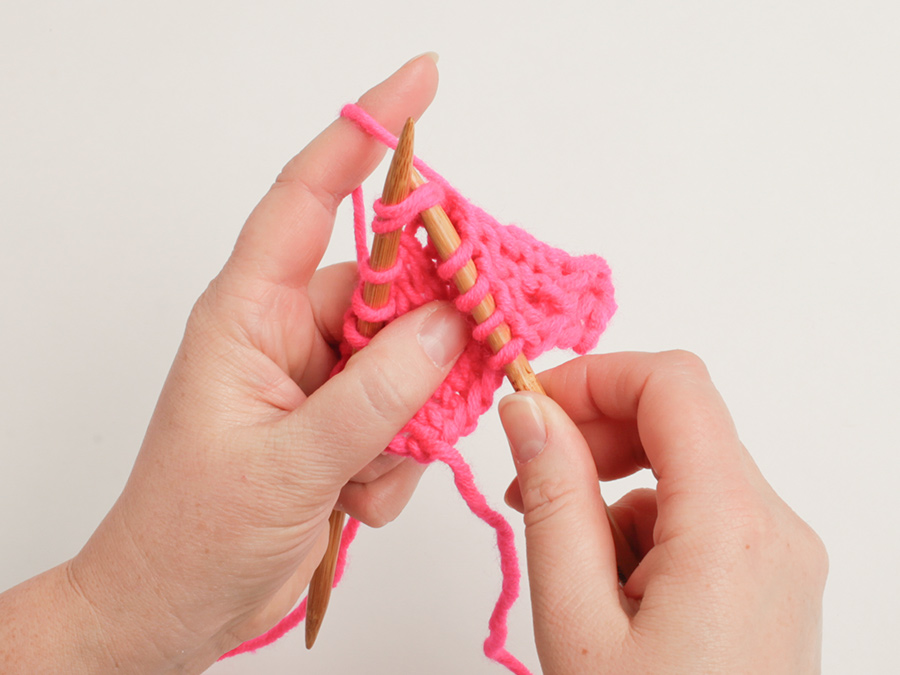
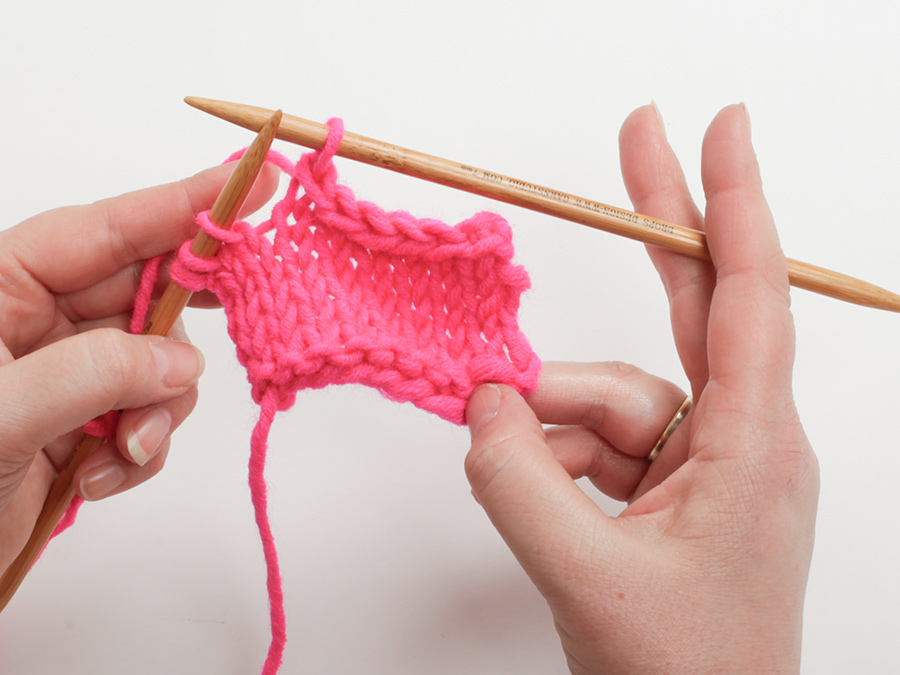
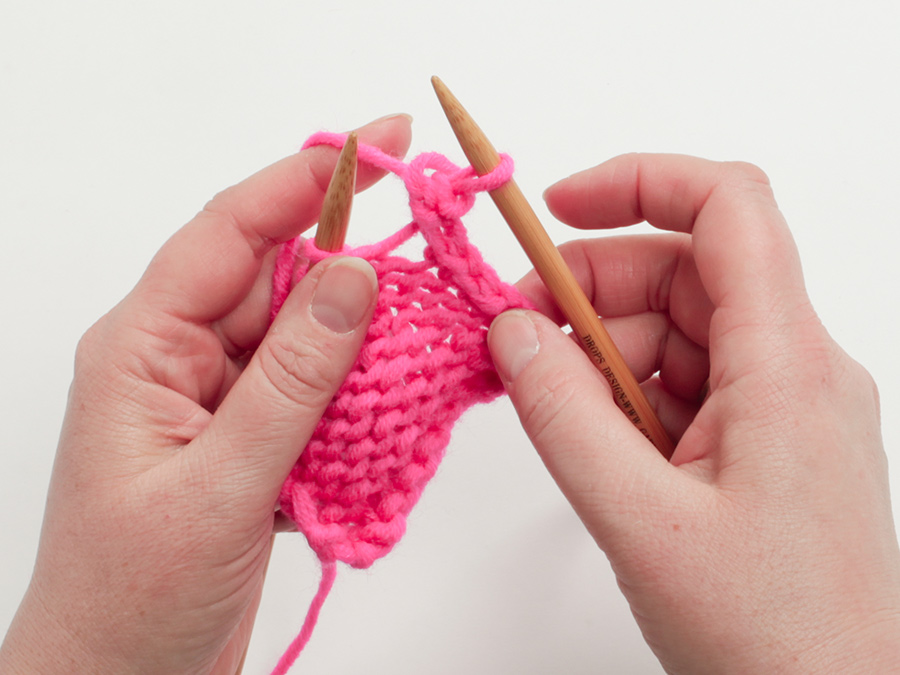

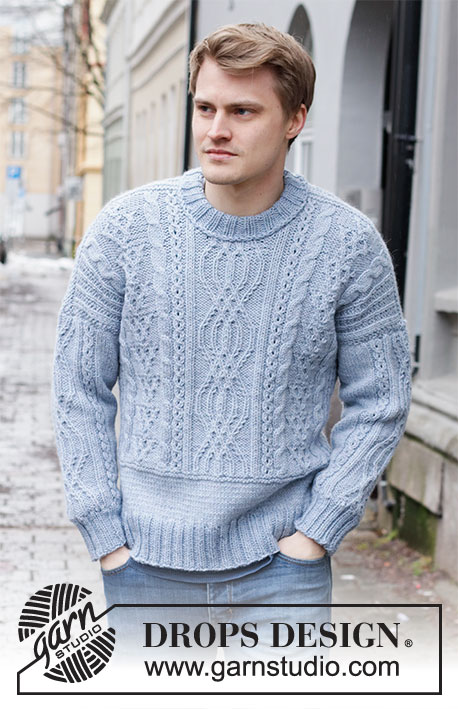

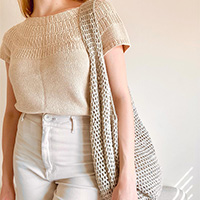


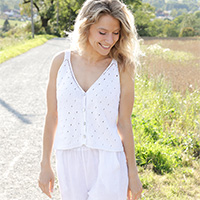
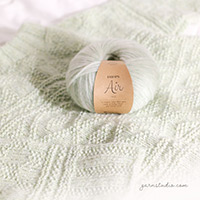
Comments / Questions (42)
I got a very weird looking increase part over A2a and A2b sections. It says you start increasing in pattern in A2a after the second stitch marker (aka after knitting right sleeve stitches). So far that means you make 1 yarn over after the second raglan stitch. On the second row you purl it twisted. As 2a graph says that yarn over and 1 st stich, and the next row do we purl , and do we also increase as per the raglan? or just after the 2nd marker, we work as per the 2a graph?
06.01.2024 - 09:43DROPS Design answered:
Dear Mrs Methi, the increases for raglan are worked on every other round, this means just as shown in diagram, 1 round with increase (yarn over), and the next round without increase. Happy knitting!
08.01.2024 - 09:48I placed my markers, and increased 2 times on each side of markers following tip. Then it says to increase in pattern on front. Does that mean I only increase in the front? And do I increase every other row in just the front 2 times and then start the pattern increase all around? I have been working all the increases every other round like the increase tip said, but then it said when A.2a and A.3a have been worked 1 time vertically, increase as explained? Thank you for your help.
15.11.2023 - 04:55DROPS Design answered:
Hi Lynette, The increases front and back are a part of the raglan increases. So work the increases in the patterns after marker 2 and as far as marker 3, the normal raglan increases before marker 2 and after marker 3. Hope this helps and happy knitting!.
15.11.2023 - 06:46Bonjour, la suite de mon message. Il n'est pas passé au complet. Donc c'est quoi les augmentations en jersey ? Une jetée et la tricoter torse? Est-ce qu'il faut augmenter à chaque rang ? C'est pas très claire. J'ai du tout défaire à nouveau. Merci d'avance.
02.11.2023 - 23:49DROPS Design answered:
Bonjour Tigresse, vous trouverez dans sous EMPIÈCEMENT la fréquence des augmentations pour votre taille, soit 19-20-22-24-26-30 fois tous les 2 tours. Pour tricoter les augmentations en jersey, tricotez le jersey torse à l'endroit au tour suivant; pour les tricoter en point fantaisie, tricotez les jetés des devants comme indiqué dans les diagrammes A.2a et A.3a (ces jetés figurent dans les diagrammes). Bon tricot!
03.11.2023 - 06:49Bonjour, Tricoter les augmentations au point fantaisie. C'est-à-dire que l'on tricote les augmentations du dos en jersey, celles du devant d'abord en jersey puis en suivant A.2a/A.3a et enfin de nouveau en jersey.
02.11.2023 - 23:45Bonjour, 3 fois que je recommence, je ne comprends pas le paragraphe Quand A.2a et A.3a ont été tricotés 1 fois en hauteur, augmenter comme expliqué sous AUGMENTATIONS (c'est-à-dire tricoter les augmentations du devant en jersey) jusqu'à ce qu'on ait augmenté 19-20-22-24-26-30 fois au total. Taille XXL. Ces augmentations se font où exactement ? Combien de fois sur 1 rang? 2 ou 4 fois? Est-ce tout les 2 rangs ? C'est pas assez claire pour moi. Merci d'avance.
01.09.2023 - 12:22DROPS Design answered:
Bonjour Tigresse, on parle ici des augmentations du raglan, ces augmentations vont se tricoter soit en jersey (dos) soit en suivant les diagrammes A.2a/A.3a puis, quand ces diagrammes sont terminés, on va tricoter les augmentations des devants en jersey. Les augmentations du raglan des manches se tricotent en jersey. Vous allez augmenter 8 mailles à chaque fois - cf AUGMENTATIONS (raglan): 26 fois au total en taille XXL (soit 26 fois *1 tour en augmentant 8 m, 1 tour sans augmenter*). Bon tricot!
01.09.2023 - 15:32Bonjour, pour la taille XL j’ai 101 mailles au départ, j’augmente 24 x 8 mailles pour les raglans, j’obtiens 293 mailles + les 20 mailles d’augmentations des diagrammes A2a et A3a, soit 313 mailles… le schéma est donc faux, j’ai 20 mailles de trop, que faire pour rectifier ? Je suis complètement perdue !!
14.04.2023 - 00:25DROPS Design answered:
Bonjour Nadine, vous tricotez A.2a après avoir augmenté 2 fois seulement, autrement dit, quand vous augmentez pour le raglan la 3ème fois tricotez les diagrammes A.2a, A.1 et A.3a; puis, quand A.2a et A.3a sont terminés, continuez à augmenter pour le raglan comme avant et tricotez maintenant A.2b et A.3b au lieu de A.2a et A.3a. Bon tricot!
14.04.2023 - 08:00Bonjour, les diagrammes A2a et A3a sont composés chacun de 11 mailles ; les diagrammes A2b et A3b ont chacun 10 mailles donc chacun 1 maille en moins. Est-ce normal, si oui pour les raccorder quand doit-on diminuer les 2 mailles en trop ? D’avance merci pour votre réponse.
13.04.2023 - 14:51DROPS Design answered:
Bonjour Nadine, tricotez A.2b et A.3b au-dessus de la torsade de A.2a et A.3a - la 11ème maille (la dernière de A.2a et la 1ère de A.3b) va se tricoter en jersey endroit. Bon tricot!
13.04.2023 - 16:36Er staat dat je IEDERE naald moet meerderen voor de raglan. Volgens mij moet dit iedere TWEEDE naald zijn. Zo komt het ook overeen met A.3a en A.2b
29.01.2023 - 19:54Body directions start with 161 stitches. If I decrease (4 stitches) after 5cm, then three more times after 9cm, my math says 161-4-4-4-4 = 145 stitches, not 149. What am I doing wrong? 2nd Question: usually one decreases when it's time for ribbing on the bottom, but this pattern say increase 11 stitches. Is this correct? Thanks for your help.
25.12.2022 - 20:58DROPS Design answered:
Dear Joe, you need to work the decreases 3 times in total, not 3 more times. So you decrease in total 12 stitches = 149 stitches. 2) Yes, it's correct, you need to increase for the ribbing on the bottom. Whether you increase or decrease for the bottom rib will depend on if you are working a garment from top bottom or bottom up. Happy knitting!
26.12.2022 - 00:21I know how to do raglan, and charts are always read from right to left?? if A2a is knitted after the 2nd marker (=right sleeve) it’s still rather confusing, or is a2a the left sleeve? It would be good if this is stated under the chart. It would be much clearer if the written instructions would say: keep increasing in the raglan way until there is ?? stitches on your needles, but knit the increases according to the chart in 2a/b or something like that. I’ll find my way now
25.10.2022 - 01:48